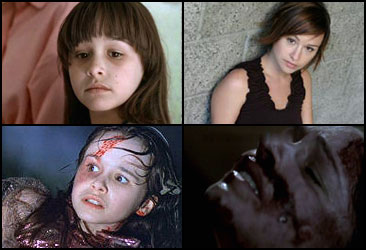
danielle harris then & now, bloody & non-bloody
given the name of this site, it seems fitting that the first real entry be about halloween. the 1978 version is my favorite film, so i was anxious to see what rob zombie would do with it. i’m not one of those people who hates remakes… i can always go and watch the original regardless of how carelessly hollywood may treat source material that i love. while blasphemous to some, i occasionally even prefer the remakes despite my affection for the original, as in the case of dawn of the dead. therefore i went into halloween (2007) with an open mind and an honest desire to enjoy the film.
two things immediately become apparent while watching rob zombie’s re-imagining of halloween.
- danielle harris is really, really naked in this movie.
- rob zombie thinks girls like to have sex with guys with gross hair
i have to say it’s rather disturbing to see danielle harris nude in a halloween film. she was tiny 11-year old jaime in parts 4 and 5, and i’m not sure how i feel about her progressing from playing with crayons while michael tries to kill her to begging some guy for sex while michael tries to kill her. it’s also going to be very confusing and play havoc with series continuity if they decide to make halloween 9 and bring back jaime lloyd’s character.
| 1978 | 2007 |
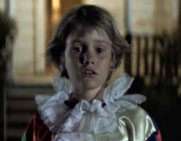 young michael |
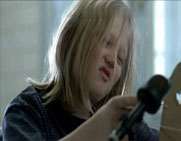 young michael |
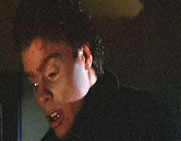 old michael |
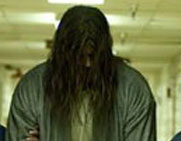 old michael |
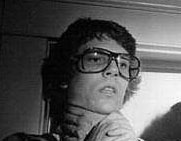 boyfriend |
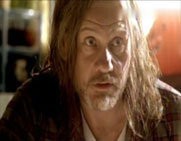  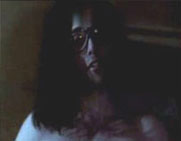 boyfriends |
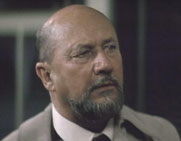 dr. loomis |
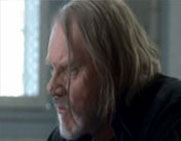 dr. loomis |
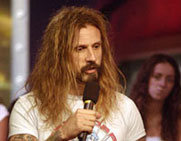
rob zombie
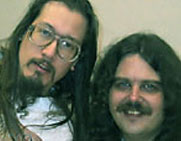
those guys in american movie
as for the other thing… well, apparently rob zombie thinks that what teenage girls really want is a scrawny guy with long, greasy hair. given his own hair style, this is not a huge surprise. yet it’s a little distracting that this film apparently takes place in a reality where having hair like those guys in american movie is a prerequisite for getting laid. maybe michael had previously broken out of smith’s grove on an earlier halloween and killed all the barbers? three of the four boyfriends in this movie have ‘zombie hair’. old michael has it… young michael has it… even dr. loomis has it for half the movie (while in the 1978 film he had no hair at all). over there on the right in tabular format is a comparison of the male hair styles in both versions of the film. keep in mind that the original was made in the 1970s… a time when long greasy hair was quite common due to the still lingering hippie culture and the lack of pert plus.
the internet is currently flooded with reviews of this film, so i’ll avoid a traditional review and just focus on a few points that seem particularly salient to me. i can say that i’ve seen both the theatrical version in a packed theater and the so-called ‘work print’ easily available at the torrent tracker of your choice, and i’m sad to say that i’m rather disappointed in both versions.
i had heard that the film spent a rather large proportion of its running time explaining michael’s back story, and i was very skeptical about this approach. i can happily say that this aspect of the film surprised me, and the first hour of the film, for the most part, actually works quite well. still, there’s a lot to be said for the lack of explanation for michael’s psychosis in the 1978 film. part of the reason that opening scene is so effective is it’s clear michael’s family is your typical middle-class family whose young son just snapped and became a monster one night for little to no reason. however, seeing exactly how michael was created makes him more comprehensible and (in some ways) scarier than the emotionless evil stalking haddonfield in carpenter’s vision.
explaining michael does have a rather profound effect not just on the plot of the film but on its meaning as well. in the original film michael can be read as a metaphor for the evil that hides behind the leave it to beaver fascade of suburban america. when you remove michael’s middle-class beginnings and instead make it clear that his abusive environment is largely responsible for his psychotic break, carpenter’s metaphor breaks down and your film is fundamentally a different story. this is one of the many reasons that the last third of the film fails. the first two thirds dictate a different direction than where the original film went, yet the director attempts to force the same story where it doesn’t belong. due to the length of the back-story, the last third of the film is an accelerated version of the original film. this is a horrible idea when the material you’re trying to condense relies almost completely on slow building suspense and a sense of dread.
ultimately the film fails to deliver because rob zombie can’t direct suspense. he’s a fantastic visual artist and can direct action sequences fabulously, but he doesn’t understand how to elicit fear. he resorts to staccato, music video editing when the scene calls for something more hitchcockian and he forgets the importance of conveying geography during a chase scene. in the theatrical version’s climax, it’s difficult to tell where the threat is in relation to the victim. the result is that what should be an exciting sequence becomes frustrating and tiring.
today’s audiences are more sophisticated than hollywood gives them credit for, partly due to rise of the dvd format. we’ve all seen ‘deleted scenes’ and ‘alternate endings’ to our favorite films on dvd and we’ve all seen different versions of the same film, even if only by seeing a film in the theater and then seeing the ‘director’s cut’ or ‘unrated version’ when it hit dvd. i’d like to suggest that modern audiences have a unprecedented knowledge of film structure and editing that filmmakers need to be aware of. it was painfully obvious while watching halloween (2007) in the theater that scenes were missing, characters had been trimmed and the whole thing was stitched together rather carelessly. for example, udo kier shows up for about 5 seconds in the film and it’s distracting that this is his only appearance (as expected, he shows up in the ‘workprint’ far more). in both versions of the film it appears that you can call 911 from one house, run down the street into another house… and the cops will magically know to show up at your new location. while no masterpiece, the ‘work print’ is better in this respect and has quite a few scenes and snippets of dialogue that make the story of the film easier to understand.
if you’re curious you can see a list of the differences between the theatrical and ‘work print’ versions of the film here. the key differences are a rape scene and a radically different ending.
i do discuss the end of the film in detail in the next section, so if you wish to avoid spoilers you will want to stop reading now.
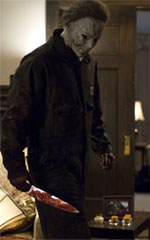
the ‘work print’ ends with loomis talking michael into releasing laurie and dropping his knife. after a few seconds pause, the cops decide to kill him anyway and shoot him with about 10,000 bullets. the theatrical version of the film ends with michael chasing laurie though the myer’s house. he grabs her, throwing them both out of a window. a struggle ensues, and laurie apparently kills michael by shooting him in the face. it’s unclear to me what one is supposed to take away from either of these endings, but i am glad they didn’t try to just replicate the 1978 film’s conclusion.
my interpretation of this film is hindered by confusion over michael’s motives. if you’ve seen the film (either version), i’d like to know what you think. why was michael stalking laurie? was it to kill her? apparently not, given that he puts his weapon down and attempts to make some sort of connection with her by showing her the picture of them together. not even loomis is convinced that murdering laurie is michael’s goal. when asked by the sheriff what michael wants, he says “i don’t know. but it’s not good.” in the end of the ‘work print’ he lets laurie go… in the theatrical version while he does reach up and grab the barrel of the gun that she’s pointing at him, it’s not clear to me whether he was trying to stop her from killing him or indicate that he wanted her to kill him or intimidate her so that she’d kill him in self defense. if his intent was for laurie to stop him… why?
i’d originally thought that michael wanted to kill her because she represented the last bit of humanity in him (after all, he didn’t kill her as an infant when he could have) and maybe now he was trying to fix that mistake, completing his journey to the ‘dark side’ or whatever. that doesn’t seem likely given the photograph scene, so it seems the options are:
- michael’s just crazy and wants to kill everyone and would have continued until someone stopped him
- michael wanted laurie to kill him, thus michael was effectively trying to commit suicide
- michael wanted to reconnect with his sister but decided to just kill her after it was obvious she wasn’t interested in a family reunion
- michael wanted to kill laurie originally, but changed his mind after finding her
in my mind, none of these options are completely consistent with everything else in the film and the more i think about it, the more i think that rob didn’t even know. the majority of the film is told from michael’s perspective, yet his motivations are never even remotely clear. if his only goal was killing the rest of his family, what was with the photograph scene? and why did he need to kill everyone else? laurie’s friends and family were not blocking his path to laurie. it seems that rob wanted to humanize michael, giving him legitimate feelings and making him somewhat identifiable on a human level… but this is in direct opposition to the rest of the movie where rob tries to keep michael as the senseless killing machine he was in the original film. he can’t be Norman Bates and the great white from Jaws simultaneously. it’s a shame this rob zombie couldn’t find a focused vision for material he obviously cared a great deal about. at times the film seems to be finding its way, only to collapse under its own weight. ultimately, the film cannot stand on its own and is best viewed as an interesting companion piece to a far superior film. with a lot more hair.
edit 9/13/07: if you’ve seen the film, you’ll probably like this.








6 Responses to The Hair of Halloween (2007)
Subscribe Without Commenting